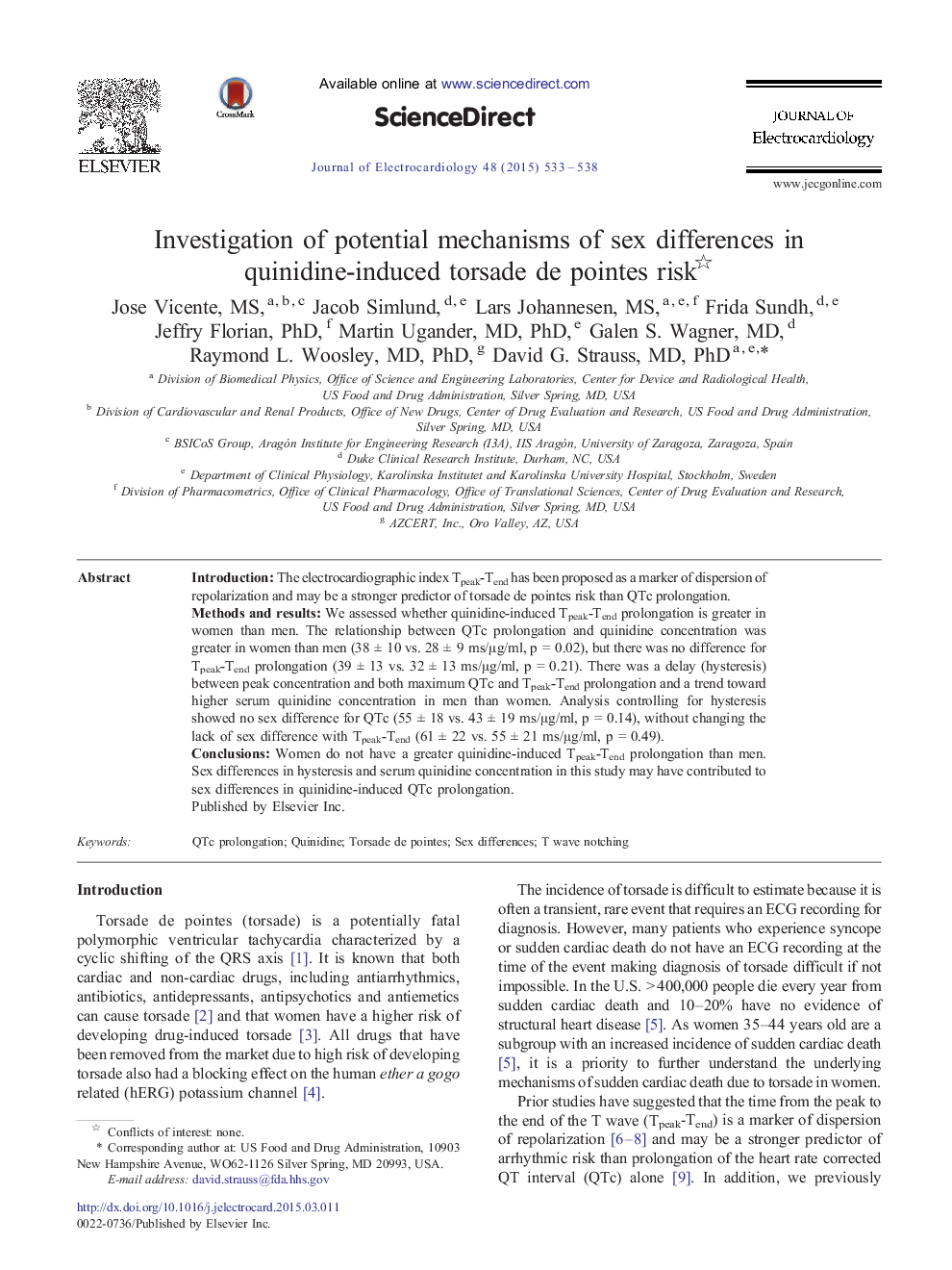| Article ID | Journal | Published Year | Pages | File Type |
|---|---|---|---|---|
| 5986252 | Journal of Electrocardiology | 2015 | 6 Pages |
•At equivalent serum levels, quinidine caused greater QTc prolongation in women.•There were no sex differences in quinidine-induced Tpeak-Tend prolongation.•There was a delay between peak quinidine serum levels and maximum ECG changes.•Analysis controlling for hysteresis showed no sex differences in QTc or Tpeak-Tend.•Future research should consider sex differences in concentration-effect hysteresis.
IntroductionThe electrocardiographic index Tpeak-Tend has been proposed as a marker of dispersion of repolarization and may be a stronger predictor of torsade de pointes risk than QTc prolongation.Methods and resultsWe assessed whether quinidine-induced Tpeak-Tend prolongation is greater in women than men. The relationship between QTc prolongation and quinidine concentration was greater in women than men (38 ± 10 vs. 28 ± 9 ms/μg/ml, p = 0.02), but there was no difference for Tpeak-Tend prolongation (39 ± 13 vs. 32 ± 13 ms/μg/ml, p = 0.21). There was a delay (hysteresis) between peak concentration and both maximum QTc and Tpeak-Tend prolongation and a trend toward higher serum quinidine concentration in men than women. Analysis controlling for hysteresis showed no sex difference for QTc (55 ± 18 vs. 43 ± 19 ms/μg/ml, p = 0.14), without changing the lack of sex difference with Tpeak-Tend (61 ± 22 vs. 55 ± 21 ms/μg/ml, p = 0.49).ConclusionsWomen do not have a greater quinidine-induced Tpeak-Tend prolongation than men. Sex differences in hysteresis and serum quinidine concentration in this study may have contributed to sex differences in quinidine-induced QTc prolongation.
